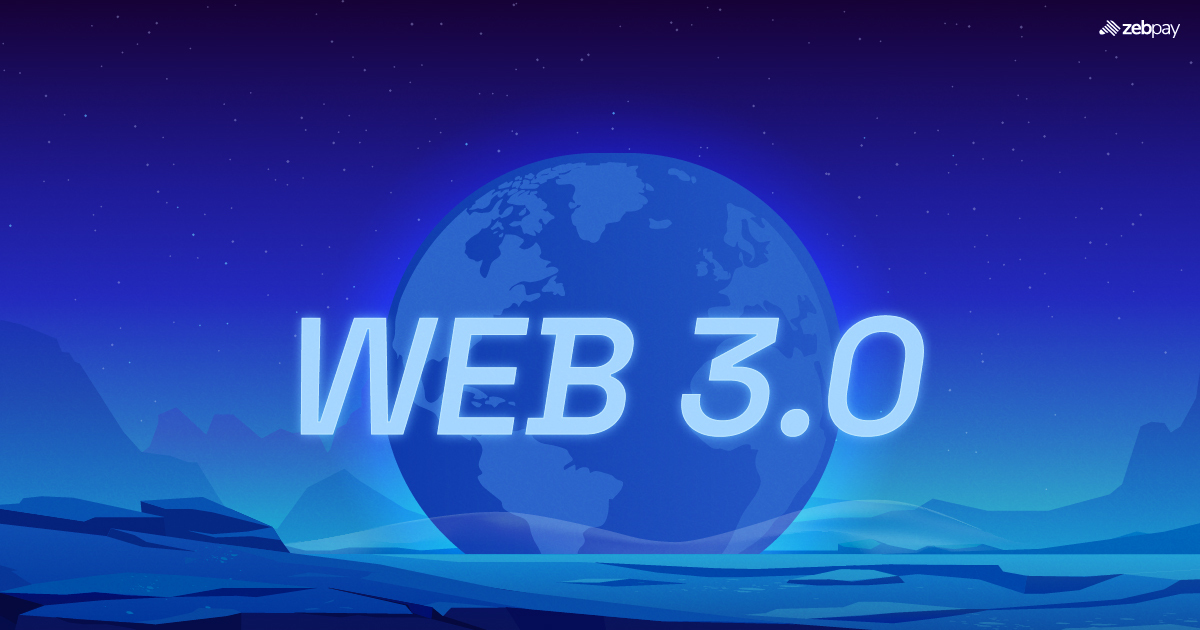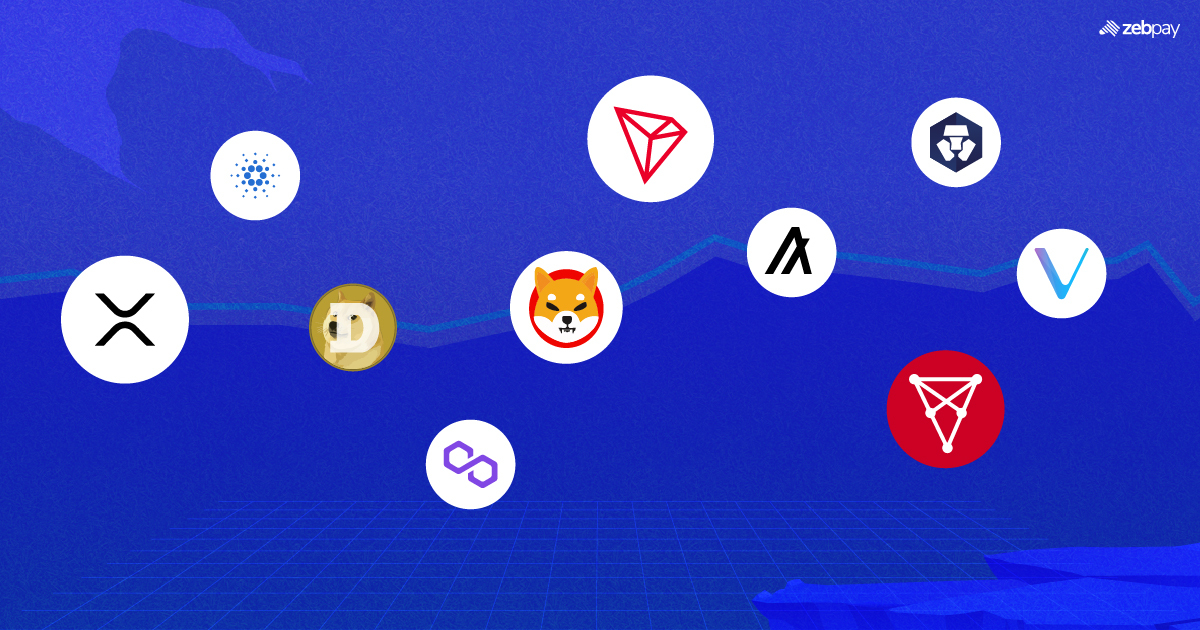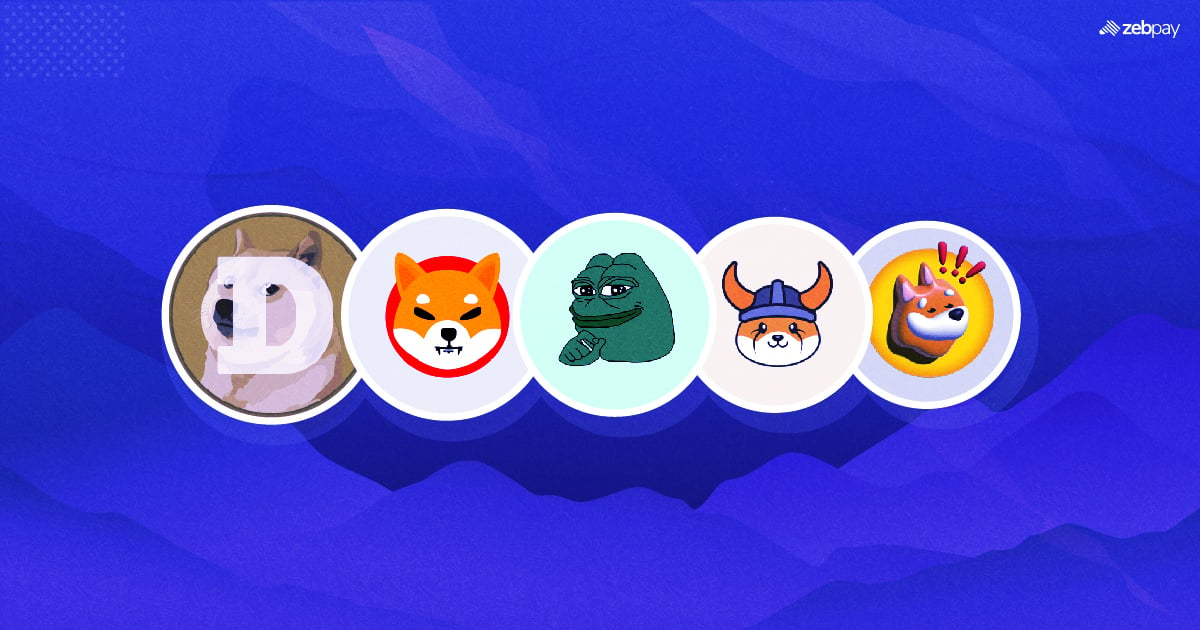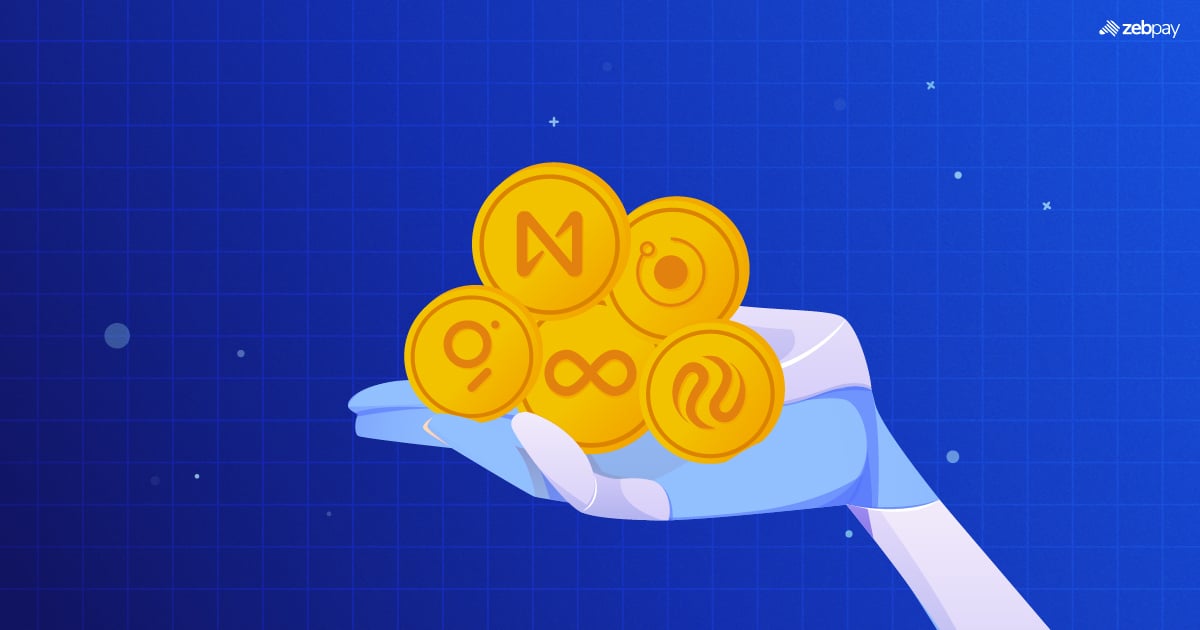What’s exciting about the World Wide Web? When the web evolved from 1.0 to 2.0, it brought incredible improvements in user experience and access to content. However, it also paved the way for new challenges like tech monopolies and concerns over data privacy.
Now, imagine a web that’s decentralized, transparent, and gives control back to its users. This vision is becoming a reality with the rapid growth of Web 3.0.
What is Web3?
Web3 is widely regarded as the next major step in the evolution of the Internet. Although it’s still in its early stages, several exciting features are anticipated to define Web3’s future:
Open: Platforms and software built on Web3 technologies will be open-source and accessible to all. This openness fosters collaboration, innovation, and community-driven growth. By sharing the underlying code, Web3 promotes transparency and facilitates the free exchange of knowledge and resources.
Trustless: With Web3, transactions, data sharing, and other activities can happen without relying on a trusted third party. This means users won’t have to rely on big corporations like Google or Microsoft to safeguard their data. Thanks to cryptographic algorithms and smart contracts, Web3 ensures secure, transparent, and tamper-proof interactions, eliminating the need for intermediaries and centralized control.
Decentralized: Web3 operates without a central authority overseeing it. Instead, power and decision-making are distributed across the network, ensuring a more democratic system. This decentralization helps reduce risks linked to centralized systems, such as single points of failure and censorship.
Ultimately, Web3 envisions a new Internet architecture that is more transparent, democratic, and user-centric. Users will have greater control over their data and can engage with applications and services in a secure manner. By leveraging blockchain, artificial intelligence, and big data, Web3 promises to make the Internet smarter, more autonomous, and more user-friendly.
How Does Web3 Work?
Web3 is based on blockchain technology. This decentralized ledger stores data over a vast network, making it resistant to tampering and censorship. In Web3, the blockchain is used to store and verify transactions or smart contracts without the need for a central authority.
Here’s a quick overview of getting started with Web3:
- You can interact with Web3 applications (dApps) through a web browser. You can also use a special app called a Web3 browser or wallet, which connects to the blockchain network.
- When you use a dApp, a transaction is created and sent to the blockchain network.
- The transaction is verified by nodes in the blockchain. This ensures the transaction is authentic, and all information provided is valid.
- Once the transaction is verified, it can be added to the blockchain. Transactions are stored to create a permanent record of all activity on the network.
DApps also use new technologies like smart contracts. A smart contract is a digital contract that allows for agreements to be automated and independent, making transactions transparent and more secure.
DApps also use crypto tokens for all in-app exchanges. There is no need for a central authority like a bank or government to verify each transaction.
Read more: What Are Blockchain Layers
Why Is Web3 Important?
Web 2.0 has led to many innovations in communication, e-commerce, and social networking. But it also has its downsides, such as a lack of privacy and centralized control. Web3 seeks to solve this by creating an open and decentralized internet.
One of the key benefits of Web3 is that you can take control of your data. This means you can choose what information to share, who to share it with, and how it’s used. With Web3, users have greater ownership and control over their data and digital identities. Your data is no longer controlled by large corporations.
Another important aspect of Web3 is the use of dApps. dApps are built on a decentralized network, where every user has equal rights and control. They are transparent, accountable, and highly resistant to censorship.
Key Web3 Ideas
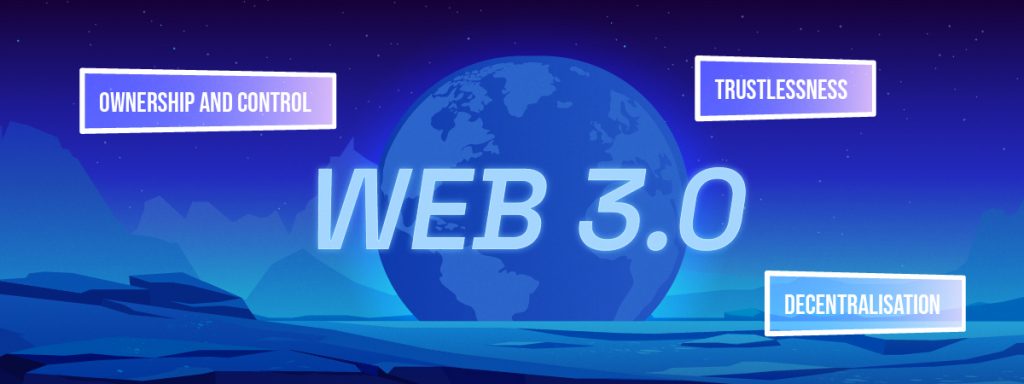
As mentioned above, there are some key ideas around which Web3 has been created. These include:
- Trustlessness: Web3 does not rely on trust between users or institutions. Instead, it uses cryptographic algorithms and smart contracts to ensure security and transparency. Through the use of these technologies, Web3 eliminates the need for intermediaries and creates a trustless environment where transactions can be conducted with confidence.
- Ownership and control: With Web3, users have greater ownership and control over their data and digital identities. Your data is no longer controlled by large corporations. Instead, you have the ability to decide how your data is used and shared, providing you with greater autonomy and privacy.
- Decentralisation: Web3 is built on the decentralized nature of blockchains. It cannot be controlled by monopolies or central authorities. This decentralization promotes a more democratic and inclusive internet, where power is distributed among network participants. By removing the reliance on a central authority, Web3 reduces the risk of censorship, manipulation, and abuse of power.
Features of the Web 3.0 Ecosystem
Some of the essential elements of a Web 3.0 ecosystem include:
- Blockchains: Distributed ledgers that store data across a network of computers. They allow for transactions to be recorded and stored transparently for all users to access. Blockchain technology provides the foundation for the decentralized and secure nature of Web3.
- Smart Contracts: Self-executing code that enables contracts to function automatically. Smart contracts make the ecosystem more efficient and allow developers to create unique automated features. They eliminate the need for intermediaries in contractual agreements, ensuring transparency and reducing costs.
- Digital Assets: The use of crypto tokens and NFTs is essential to Web 3.0. It allows for financial transactions to be independent of governments and banks, which makes the system decentralized. Digital assets can represent ownership, identity, or other valuable items, and they enable new business models and economic systems within the Web3 ecosystem.
- Interoperability: A major issue with blockchains and assets today is that they are locked into their own ecosystems. Web3 aims to create a unified ecosystem where all blockchains can connect and share assets with each other. Interoperability ensures that different platforms and applications can seamlessly interact, fostering collaboration and expanding possibilities within the Web3 landscape.
Read more: Guide to Taking Your Organization from Web2 to Web3
What is the Difference Between Web 1.0, Web 2.0 and Web 3.0?
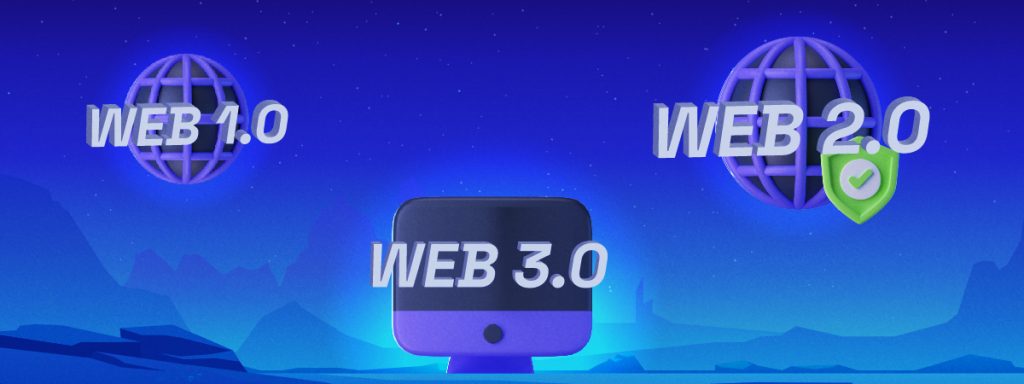
| Feature | Web 1.0 | Web 2.0 | Web 3.0 |
| User Engagement | Read-only. There was no concept of user pages or comments on a page | Read-write. It introduced a social element to the web by allowing users to share data | Read-write-own. Any data you share on the web is also owned by you. |
| Technologies Used | Server architecture, static pages | Javascript, HTML, CSS | Artificial intelligence, machine learning and blockchains |
| Control | Website owners | Tech monopolies | Decentralized, user-owned |
| Goal | Sharing Information | Web Interaction | Web Immersion |
| Examples | MySpace, LiveJournal | Instagram, Amazon | Brave Browser, the Metaverse |
What is the Future of Web3?
Web3 is still in its infancy, with very few examples of the technology in use. However, the need for blockchains and digital assets is expanding rapidly. This means we may see the technology applied to many more use cases in the years to come.
In the meantime, the future of Web3 seems to be integration with the current internet. Dubbed Web2.5, this version combines the smart internet of Web 3.0 with the interactive nature of Web 2.0 to bridge the gap between them. This integration allows for a gradual transition to a more decentralized and user-centric web.
Read more: Future of Web 3.0 in Ecommerce
Are Blockchain and Web 3.0 the Same?
Although blockchain and Web 3.0 are often mentioned together, they are not the same thing. Web 3.0 represents the next phase of the Internet, offering data ownership and a smarter, more intuitive online experience. On the other hand, blockchain is one of the key technologies driving Web 3.0, making it decentralized and transparent. Blockchain serves as a core component of Web3, facilitating trustless transactions, ensuring data immutability, and providing decentralized data storage.
Conclusion
Web 3.0 marks the next phase of the Internet, promising a more transparent, decentralized, and democratic online experience that empowers users with greater ownership. By harnessing blockchain technology, smart contracts, and digital assets, Web 3.0 will offer a more secure and efficient system. While still in its early stages, the potential of Web 3.0 is vast, and it is poised to play a transformative role in shaping the future of the Internet.
You can read more about Web 3.0, Crypto and blockchain on ZebPay blogs. Join the millions already using ZebPay Singapore.
FAQ on Web 3.0
How does Web 3.0 differ from Web 2.0?
Web 3.0 differs from Web 2.0 in several key aspects. While Web 2.0 focused on user-generated content and social interactions, Web 3.0 takes it a step further by introducing decentralization, trustlessness, and user ownership. In Web 3.0, users have greater control over their data and digital identities, and transactions can be conducted without the need for intermediaries. Additionally, Web 3.0 utilizes blockchain technology, smart contracts, and digital assets to create a more transparent and secure online environment.
What are the key technologies driving Web 3.0?
Web 3.0 is driven by several key technologies, including blockchain, smart contracts, and decentralized applications (dApps). Blockchain technology provides the foundation for decentralization and transparency, allowing for secure and tamper-proof data storage. Smart contracts automate agreements and transactions, eliminating the need for intermediaries and increasing efficiency. dApps are decentralized applications that run on the blockchain, ensuring transparency, accountability, and resistance to censorship.
What is an NFT in Web 3.0?
NFT stands for Non-Fungible Token and is a unique digital asset that represents ownership or proof of authenticity for a specific item or piece of content. In Web 3.0, NFTs play a crucial role in the ownership and exchange of digital assets, such as art, collectibles, music, and virtual real estate. NFTs are built on blockchain technology, making them scarce, indivisible, and easily verifiable. They enable creators and artists to monetize their work directly, bypassing traditional intermediaries.
How will Web 3.0 impact the entertainment and media industries?
Web 3.0 is expected to have a profound impact on the entertainment and media industries. With Web 3.0, content creators can have greater control over their work and directly monetize their creations through NFTs and decentralized platforms. This enables new business models, such as tokenized ownership, royalty distribution, and crowdfunding. Additionally, Web 3.0 allows for more transparent and secure distribution of content, reducing piracy and ensuring that artists receive fair compensation for their work.
What role will blockchain technology play in the development of Web 3.0?
Blockchain technology plays a central role in the development of Web 3.0. It provides the underlying infrastructure for decentralized and transparent systems. By using blockchain, Web 3.0 ensures immutability, security, and consensus without the need for a central authority. Blockchain enables trustless transactions, enables the creation of digital assets, and facilitates the execution of smart contracts. It also allows for the recording and storage of data in a distributed manner, making it resistant to tampering and censorship.
How will Web 3.0 affect online privacy and data security?
Web 3.0 aims to address the issues of online privacy and data security that are prevalent in Web 2.0. With Web 3.0, users have greater ownership and control over their data. They can choose what information to share, who to share it with, and how it’s used. The decentralized nature of Web 3.0, powered by blockchain technology, ensures that data is stored in a distributed manner, making it less vulnerable to breaches and unauthorized access. Additionally, transactions conducted on Web 3.0 are secured through cryptographic algorithms and smart contracts, enhancing overall data security and privacy.

